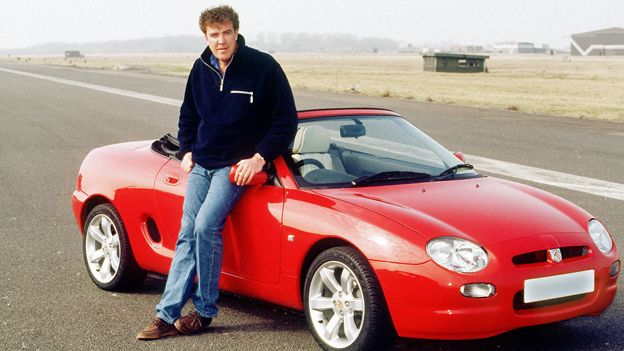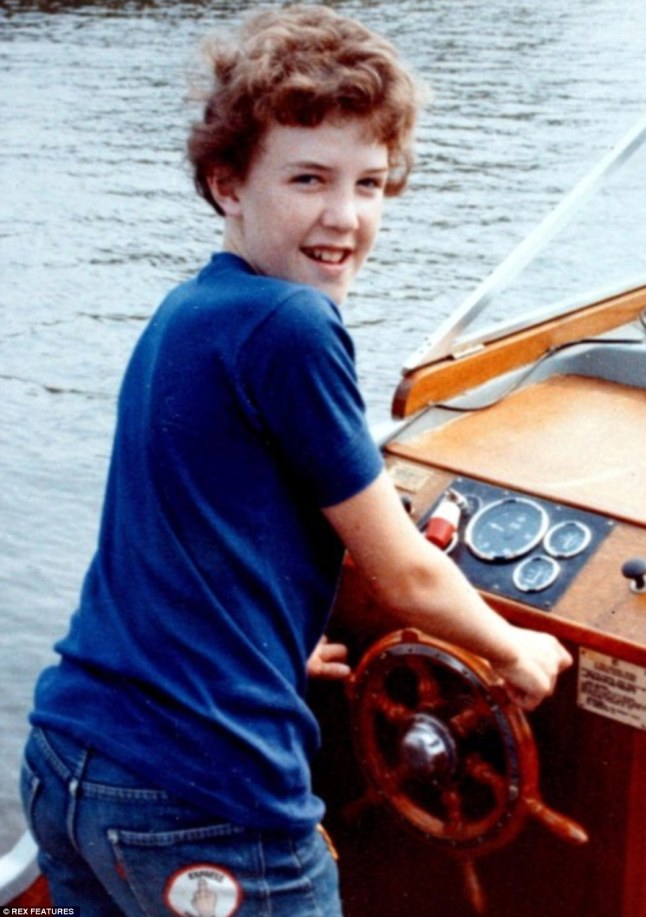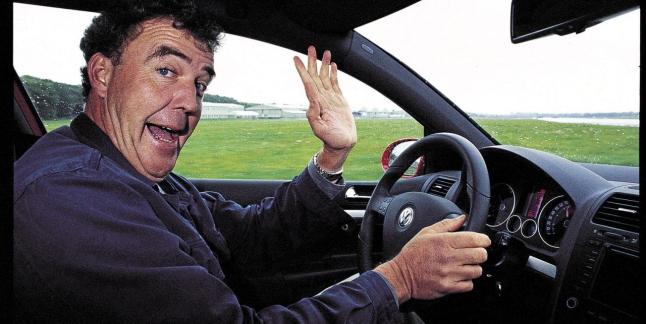Enid Blyton was an English children’s writer whose books have been among the world’s best-sellers since the 1930s, selling more than 600 million copies. Blyton’s books are still enormously popular, and have been translated into almost 90 languages; her first book, Child Whispers, a 24-page collection of poems, was published in 1922. She wrote on a wide range of topics including education, natural history, fantasy, mystery, and biblical narratives and is best remembered today for her Noddy, Famous Five, Secret Seven, and Adventure series.
Following the commercial success of her early novels such as Adventures of the Wishing Chair (1937) and The Enchanted Wood (1939), Blyton went on to build a literary empire, sometimes producing fifty books a year in addition to her prolific magazine and newspaper contributions. Her writing was unplanned and sprang largely from her unconscious mind; she typed her stories as events unfolded before her. The sheer volume of her work and the speed with which it was produced led to rumours that Blyton employed an army of ghost writers, a charge she vigorously denied.
Blyton’s work became increasingly controversial among literary critics, teachers and parents from the 1950s onwards, because of the alleged unchallenging nature of her writing and the themes of her books, particularly the Noddy series. Some libraries and schools banned her works, which the BBC had refused to broadcast from the 1930s until the 1950s because they were perceived to lack literary merit. Her books have been criticised as being elitist, sexist, racist, xenophobic and at odds with the more liberal environment emerging in post-war Britain, but they have continued to be best-sellers since her death in 1968.
Blyton felt she had a responsibility to provide her readers with a strong moral framework, so she encouraged them to support worthy causes.In particular, through the clubs she set up or supported, she encouraged and organised them to raise funds for animal and paediatric charities. The story of Blyton’s life was dramatised in a BBC film entitled Enid, featuring Helena Bonham Carter in the title role and first broadcast in the United Kingdom on BBC Four in 2009. There have also been several adaptations of her books for stage, screen and television.
Early Life and Education
Enid Blyton was born on 11 August 1897 in East Dulwich, London, the eldest of three children, to Thomas Carey Blyton, a cutlery salesman, and his wife Theresa Mary. Enid’s younger brothers, Hanly and Carey, were born after the family had moved to a semi-detached villa in Beckenham, then a village in Kent. A few months after her birth Enid almost died from whooping cough, but was nursed back to health by her father, whom she adored. Thomas Blyton ignited Enid’s interest in nature; in her autobiography she wrote that he «loved flowers and birds and wild animals, and knew more about them than anyone I had ever met». He also passed on his interest in gardening, art, music, literature and the theatre, and the pair often went on nature walks, much to the disapproval of Enid’s mother, who showed little interest in her daughter’s pursuits. Enid was devastated when he left the family shortly after her thirteenth birthday to live with another woman. Enid and her mother did not have a good relationship, and she failed to attend either of her parents’ funerals.
From 1907 to 1915 Blyton attended St Christopher’s School in Beckenham, where she enjoyed physical activities and became school tennis champion and captain of lacrosse. She was not so keen on all the academic subjects but excelled in writing, and in 1911 she entered Arthur Mee’s children’s poetry competition. Mee offered to print her verses, encouraging her to produce more. Blyton’s mother considered her efforts at writing to be a «waste of time and money», but she was encouraged to persevere by Mabel Attenborough, the aunt of a school friend.
Blyton’s father taught her to play the piano, which she mastered well enough for him to believe that she might follow in his sister’s footsteps and become a professional musician. Blyton considered enrolling at the Guildhall School of Music, but decided she was better suited to becoming a writer. After finishing school in 1915 as head girl, she moved out of the family home to live with her friend Mary Attenborough, before moving in with George and Emily Hart at Seckford Hall in Woodbridge in Suffolk. Seckford Hall, with its allegedly haunted room and secret passageway provided inspiration for her later writing. At Woodbridge Congregational Church Blyton met Ida Hunt, who taught at Ipswich High School. Hunt invited Blyton to move to her farmhouse near Woodbridge, and suggested that she train as a teacher. Blyton was introduced to the children at the nursery school, and recognising her natural affinity with them she enrolled in a National Froebel Union teacher training course at the school in September 1916. By this time she had almost ceased contact with her family.
Blyton’s manuscripts had been rejected by publishers on many occasions, which only made her more determined to succeed: «it is partly the struggle that helps you so much, that gives you determination, character, self-reliance – all things that help in any profession or trade, and most certainly in writing». In March 1916 her first poems were published in Nash’s Magazine. She completed her teacher training course in December 1918, and the following month obtained a teaching appointment at Bickley Park School, a small independent establishment for boys in Bickley, Kent. Two months later Blyton received a teaching certificate with distinctions in zoology and principles of education, 1st class in botany, geography, practice and history of education, child hygiene and class teaching and 2nd class in literature and elementary mathematics. In 1920 she moved to Southernhay in Hook Road Surbiton as nursery governess to the four sons of architect Horace Thompson and his wife Gertrude, with whom Blyton spent four happy years. Owing to a shortage of schools in the area her charges were soon joined by the children of neighbours, and a small school developed at the house.
Career
In 1920 Blyton relocated to Chessington, and began writing in her spare time. The following year she won the Saturday Westminster Review writing competition with her essay «On the Popular Fallacy that to the Pure All Things are Pure». Publications such as The Londoner, Home Weekly and The Bystander began to show an interest in her short stories and poems.
Blyton’s first book, Child Whispers, a 24-page collection of poems, was published in 1922. It was illustrated by a schoolfriend, Phyllis Chase, who collaborated on several of her early works. Also in that year Blyton began writing in annuals for Cassell and George Newnes, and her first piece of writing was accepted for publication in Teachers’ World, «Peronei and his Pot of Glue». Her success was boosted in 1923 when her poems were published alongside those of Rudyard Kipling, Walter de la Mare and G. K. Chesterton in a special issue of Teachers’ World. Blyton’s educational texts were quite influential in the 1920s and ’30s, her most sizeable being the three-volumeThe Teacher’s Treasury, the six-volume Modern Teaching, the ten-volume Pictorial Knowledge, and the four-volumeModern Teaching in the Infant School.
In July 1923 Blyton published Real Fairies, a collection of thirty-three poems written especially for the book with the exception of «Pretending», which had appeared earlier in Punch magazine. The following year she published The Enid Blyton Book of Fairies, illustrated by Horace J. Knowles, and in 1926 the Book of Brownies. Several books of plays appeared in 1927, including A Book of Little Plays and The Play’s the Thing with the illustrator Alfred Bestall.
In the 1930s Blyton developed an interest in writing stories related to various myths, including those of ancient Greece and Rome; The Knights of the Round Table, Tales of Ancient Greece and Tales of Robin Hood were published in 1930. In Tales of Ancient Greece Blyton retold sixteen well-known ancient Greek myths, but used the Latin rather than the Greek names of deities and invented conversations between the characters. The Adventures of Odysseus, Tales of the Ancient Greeks and Persians and Tales of the Romans followed in 1934.
The first of twenty-eight books in Blyton’s Old Thatch series, The Talking Teapot and Other Tales, was published in 1934, the same year as the first book in her Brer Rabbit series, Brer Rabbit Retold; her first serial story and first full-length book, Adventures of the Wishing-Chair, followed in 1937. The Enchanted Wood, the first book in the Faraway Tree series, published in 1939, is about a magic tree inspired by the Norse mythology that had fascinated Blyton as a child. According to Blyton’s daughter Gillian the inspiration for the magic tree came from «thinking up a story one day and suddenly she was walking in the enchanted wood and found the tree. In her imagination she climbed up through the branches and met Moon-Face, Silky, the Saucepan Man and the rest of the characters. As in the Wishing-Chair series, these fantasy books typically involve children being transported into a magical world in which they meet fairies, goblins, elves, pixies and other mythological creatures.
Blyton’s first full-length adventure novel, The Secret Island, was published in 1938, featuring the characters of Jack, Mike, Peggy and Nora. Described by The Glasgow Herald as a «Robinson Crusoe-style adventure on an island in an English lake», The Secret Island was a lifelong favourite of Gillian’s and spawned the Secret series. The following year Blyton released her first book in the Circus series and her initial book in the Amelia Jane series, Naughty Amelia Jane! According to Gillian the main character was based on a large handmade doll given to her by her mother on her third birthday.
During the 1940s Blyton became a prolific author. In 1940 Blyton published two books – Three Boys and a Circus and Children of Kidillin – under the pseudonym of Mary Pollock, in addition to the eleven published under her own name that year. But Blyton’s readers were not so easily deceived and many complained about the subterfuge to her and her publisher, with the result that all six books published under the name of Mary Pollock – two in 1940 and four in 1943 – were reissued under Blyton’s name. Later in 1940 Blyton published the first of her boarding school story books and the first novel in the Naughtiest Girl series, The Naughtiest Girl in the School, which followed the exploits of the mischievous schoolgirl Elizabeth Allen at the fictional Whyteleafe School. The first of her six novels in the St. Clare’s series, The Twins at St. Clare’s, appeared the following year, featuring the twin sisters Patricia and Isabel O’Sullivan.
In 1942 Blyton released the first book in the Mary Mouse series, Mary Mouse and the Dolls’ House, about a mouse exiled from her mousehole who becomes a maid at a dolls’ house. In 1942, Blyton published the first novel in the Famous Five series, Five on a Treasure Island, with illustrations by Eileen Soper. Its popularity resulted in twenty-one books between then and 1963, and the characters of Julian, Dick, Anne, George (Georgina) and Timmy the dog became household names in Britain. Matthew Grenby, author of Children’s Literature, states that the five were involved with «unmasking hardened villains and solving serious crimes», although the novels were «hardly ‘hard-boiled’ thrillers». Blyton based the character of Georgina, a tomboy she described as «short-haired, freckled, sturdy, and snub-nosed» and «bold and daring, hot-tempered and loyal», on herself.
Blyton had an interest in biblical narratives, and retold Old and New Testament stories. The Land of Far-Beyond is a Christian parable along the lines of John Bunyan’sPilgrim’s Progress, with contemporary children as the main characters. In 1943 she published The Children’s Life of Christ, a collection of fifty-nine short stories related to the life of Jesus, with her own slant on popular biblical stories, from the Nativity and the Three Wise Men through to the trial, the crucifixion and the resurrection. Tales from the Bible was published the following year, followed by The Boy with the Loaves and Fishes in 1948.
The first book of Blyton’s Five Find-Outers series, The Mystery of the Burnt Cottage, was published in 1943, as was the second book in the Faraway series, The Magic Faraway Tree, which in 2003 was voted 66th in the BBC’s Big Read poll to find the UK’s favourite book. Several of Blyton’s works during this period have seaside themes; John Jolly by the Sea, a picture book intended for younger readers, was published in a booklet format by Evans Brothers. Other books with a maritime theme include The Secret of Cliff Castle and Smuggler Ben, both attributed to Mary Pollock in 1943; The Island of Adventure, the first in the Adventure series of eight novels from 1944 onwards; and various novels of the Famous Five series such as Five on a Treasure Island, Five on Kirrin Island Again and Five Go Down to the Sea.
Capitalising on her success, with a loyal and ever-growing readership, Blyton produced a new edition of many of her series such as the Famous Five, the Five Find-Outers and St. Clare’s every year in addition to many other novels, short stories and books. In 1946 Blyton launched the first in the Malory Towers series of six books based around the schoolgirl Darrell Rivers, First Term at Malory Towers, which became extremely popular, particularly with girl
The first book in Blyton’s Barney Mysteries series, The Rockingdown Mystery, was published in 1949, as was the first of her fifteen Secret Seven novels. The Secret Seven Society consists of Peter, his sister Janet, and their friends Colin, George, Jack, Pam and Barbara, who meet regularly in a shed in the garden to discuss peculiar events in their local community. Blyton rewrote the stories so they could be adapted into cartoons, which appeared in Mickey Mouse Weekly in 1951 with illustrations by George Brook. The French author Evelyne Lallemand continued the series in the 1970s, producing an additional twelve books, nine of which were translated into English by Anthea Bell between 1983 and 1987.
Blyton’s Noddy, about a little wooden boy from Toyland, first appeared in the Sunday Graphic on 5 June 1949, and in November that year Noddy Goes to Toyland, the first of at least two dozen books in the series, was published. The idea was conceived by one of Blyton’s publishers, Sampson, Low, Marston and Company, who in 1949 arranged a meeting between Blyton and the Dutch illustrator Harmsen van der Beek. The Noddy books became one of her most successful and best-known series, and were hugely popular in the 1950s. An extensive range of sub-series, spin-offs and strip books were produced throughout the decade, including Noddy’s Library, Noddy’s Garage of Books, Noddy’s Castle of Books, Noddy’s Toy Station of Books and Noddy’s Shop of Books.
In 1950 Blyton established the company Darrell Waters Ltd to manage her affairs. By the early 1950s she had reached the peak of her output, often publishing more than fifty books a year, and she remained extremely prolific throughout much of the decade. By 1955 Blyton had written her fourteenth Famous Five novel, Five Have Plenty of Fun, her fifteenth Mary Mouse book, Mary Mouse in Nursery Rhyme Land, her eighth book in the Adventure series, The River of Adventure, and her seventh Secret Seven novel, Secret Seven Win Through. She completed the sixth and final book of the Malory Towers series, Last Term at Malory Towers, in 1951.
Blyton published several further books featuring the character of Scamp the terrier, following on from The Adventures of Scamp, a novel she had released in 1943 under the pseudonym of Mary Pollock. Scamp Goes on Holiday (1952) and Scamp and Bimbo, Scamp at School, Scamp and Caroline and Scamp Goes to the Zoo (1954) were illustrated by Pierre Probst. She introduced the character of Bom, a stylish toy drummer dressed in a bright red coat and helmet, alongside Noddy in TV Comic in July 1956. A book series began the same year with Bom the Little Toy Drummer, featuring illustrations by R. Paul-Hoye, and followed with Bom and His Magic Drumstick, Bom Goes Adventuring and Bom Goes to Ho Ho Village, Bom and the Clown and Bom and the Rainbow and Bom Goes to Magic Town. In 1958 she produced two annuals featuring the character, the first of which included twenty short stories, poems and picture strips.
Charitable work
Blyton and the members of the children’s clubs she promoted via her magazines raised a great deal of money for various charities; according to Blyton, membership of her clubs meant «working for others, for no reward». The largest of the clubs she was involved with was the Busy Bees, the junior section of the People’s Dispensary for Sick Animals, which Blyton had actively supported since 1933. The club had been set up by Maria Dickin in 1934, and after Blyton publicised its existence in the Enid Blyton Magazine it attracted 100,000 members in three years. Such was Blyton’s popularity among children that after she became Queen Bee in 1952 more than 20,000 additional members were recruited in her first year in office. The Enid Blyton Magazine Club was formed in 1953. Its primary object was to raise funds to help those children with cerebral palsy who attended a centre in Cheyne Walk, in Chelsea, London, by furnishing an on-site hostel among other things.
The Famous Five series gathered such a following that readers asked Blyton if they might form a fan club. She agreed, on condition that it serve a useful purpose, and suggested that it could raise funds for the Shaftesbury Society Babies’ Home in Beaconsfield, on whose committee she had served since 1948. The club was established in 1952, and provided funds for equipping a Famous Five Ward at the home, a paddling pool, sun room, summer house, playground, birthday and Christmas celebrations, and visits to the pantomime.
By 1974 the Famous Five Club had a membership of 220,000, and was growing at the rate of 6,000 new members a year. The Beaconsfield home it was set up to support closed in 1967, but the club continued to raise funds for other paediatric charities, including an Enid Blyton bed at Great Ormond Street Hospital and a mini-bus for disabled children at Stoke Mandeville Hospital.
Personal Life
On 28 August 1924 Blyton married Major Hugh Alexander Pollock, DSO at Bromley Register Office, without inviting her family. Pollock was editor of the book department in the publishing firm of George Newnes, which became her regular publisher. It was he who requested that Blyton write a book about animals, The Zoo Book, which was completed in the month before they married. They initially lived in a flat in Chelsea before moving to Elfin Cottage in Beckenham in 1926, and then to Old Thatch in Bourne End (called Peterswood in her books) in 1929.
Blyton’s first daughter Gillian, was born on 15 July 1931, and after a miscarriage in 1934, she gave birth to a second daughter, Imogen, on 27 October 1935. In 1938 Blyton and her family moved to a house in Beaconsfield, which was named Green Hedges by Blyton’s readers following a competition in her magazine. By the mid-1930s, Pollock – possibly due to the trauma he had suffered during the First World War being revived through his meetings as a publisher with Winston Churchill – withdrew increasingly from public life and became a secret alcoholic. With the outbreak of the Second World War, he became involved in the Home Guard. Pollock entered into a relationship with a budding young writer, Ida Crowe, and arranged for her to join him at his posting to a Home Guard training centre at Denbies, a Gothic mansion in Surrey belonging to Lord Ashcombe, and work there as his secretary. Blyton’s marriage to Pollock became troubled, and according to Crowe’s memoir, Blyton began a series of affairs, including a lesbian relationship with one of the children’s nannies. In 1941 Blyton met Kenneth Fraser Darrell Waters, a London surgeon with whom she began an affair. Pollock discovered the liaison, and threatened to initiate divorce proceedings against Blyton. Fearing that exposure of her adultery would ruin her public image, it was ultimately agreed that Blyton would instead file for divorce against Pollock. According to Crowe’s memoir, Blyton promised that if he admitted to infidelity she would allow him parental access to their daughters; but after the divorce he was forbidden to contact them, and Blyton ensured he was subsequently unable to find work in publishing. Pollock, having married Crowe on 26 October 1943, eventually resumed his heavy drinking and was forced to petition for bankruptcy in 1950.
Blyton and Darrell Waters married at the City of Westminster Register Office on 20 October 1943. She changed the surname of her daughters to Darrell Waters and publicly embraced her new role as a happily married and devoted doctor’s wife. After discovering she was pregnant in the spring of 1945, Blyton miscarried five months later, following a fall from a ladder. The baby would have been Darrell Waters’s first child and it would also have been the son for which both of them longed.
Blyton’s health began to deteriorate in 1957, when during a round of golf she started to complain of feeling faint and breathless, and by 1960 she was displaying signs of dementia. Blyton’s situation was worsened by her husband’s declining health throughout the 1960s; he suffered from severe arthritis in his neck and hips, deafness, and became increasingly ill-tempered and erratic until his death on 15 September 1967.
The story of Blyton’s life was dramatised in a BBC film entitled Enid, which aired in the United Kingdom on BBC Four on 16 November 2009. Helena Bonham Carter, who played the title role, described Blyton as «a complete workaholic, an achievement junkie and an extremely canny businesswoman» who «knew how to brand herself, right down to the famous signature».












